7 Exercises to Relieve Spinal & Lateral Stenosis Pain
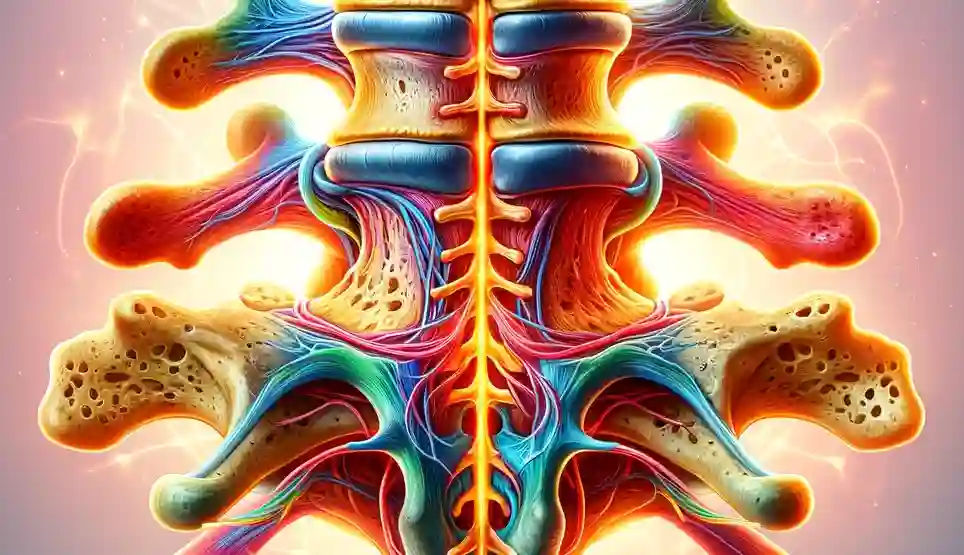
Spinal Stenosis: Understanding Your Pain and Relief Options
If you have lower back pain and sciatica that gets worse when standing but improves when you sit or lean forward (like using a shopping cart), you might have spinal stenosis.
What is Spinal Stenosis?
Spinal stenosis occurs when the spaces inside your spine narrow, putting pressure on your spinal cord and nerves. It commonly affects the lower back (lumbar stenosis) or neck (cervical stenosis).
Why Sitting or Leaning Helps: Spinal Stenosis
These positions flex your spine forward, making more room for the nerves and reducing the pressure that causes pain.
You Have Options Beyond Surgery
While surgery is sometimes necessary, there are often ways to manage spinal stenosis symptoms without it. These include:
- Medication: For pain and inflammation relief.
- Physical Therapy: Specific exercises improve strength, flexibility, and posture.
- Epidural Steroid Injections: To target inflammation around the nerves.
Exercises for Spinal Stenosis
In this article, we’ll dive into specific exercises that can be beneficial for spinal stenosis.
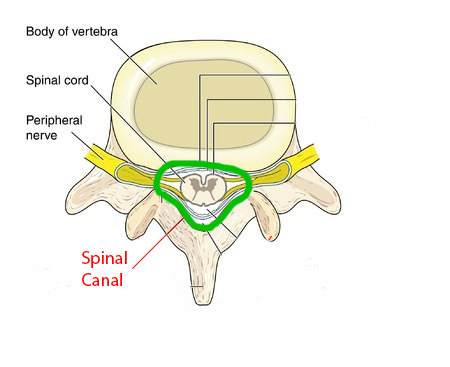
What is Spinal Stenosis: Definition
Spinal stenosis is pinching your spinal cord or your spinal nerve (nerve that comes out between vertebrae). Your spinal canal (Green ) – the opening or tunnel formed by your vertebrae, gets narrowed squeezing your spinal cord.
Causes of Spinal Stenosis
Spinal stenosis, whether it’s central stenosis (affecting the spinal canal) or lateral stenosis (affecting the nerve roots), is commonly associated with the degeneration of the spine, which is also known as osteoarthritis. This degeneration involves changes in the bones, discs, and ligaments of the spine over time, leading to the narrowing of the spinal canal or the spaces where the nerve roots exit the spinal cord.
Several factors can contribute to this degenerative process, including:
- Aging: As we age, the structures of the spine naturally undergo wear and tear, leading to degenerative changes.
- Disc Degeneration: The discs between the vertebrae lose their elasticity and water content, becoming thinner and less effective as shock absorbers.
- Bone Spurs: Also known as osteophytes, these bony outgrowths can develop along the edges of the vertebrae and contribute to narrowing the spinal canal or foraminal openings.
- Thickening Ligaments: Ligaments that support the spine can thicken over time, encroaching on the space within the spinal canal.
- Injuries: Trauma or repetitive stress injuries to the spine can accelerate degenerative changes and contribute to spinal stenosis.
- Genetic Factors: Some individuals may be predisposed to developing spinal stenosis due to genetic factors influencing the structure and integrity of their spine.
See also: Degenerative Disc Diease: Remedies For Lower Back Relief That Provide Relief
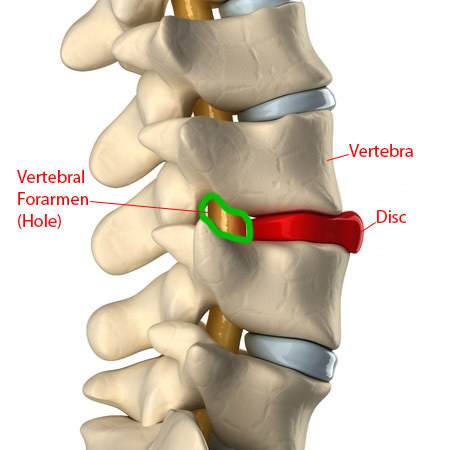
Gradual Narrowing Of the Spinal Canal
Overall, the combination of these factors leads to a gradual narrowing of the spinal canal or the neural foramina, causing compression of the spinal cord or nerve roots and resulting in symptoms characteristic of spinal stenosis.
Everyone Will Get Spinal Stenosis To Varying Degrees
It’s important to note that while aging is a significant factor, not everyone experiences spinal stenosis to the same degree, and some individuals may have other contributing factors or predispositions that influence the severity of their condition. Additionally, lifestyle factors such as smoking, obesity, and lack of exercise can also impact the development and progression of spinal stenosis.
See Also: Degenerative Disc Disease: Remedies For Lower Back Pain That Provide Relief.
Osteoarthritis essentially causes 4 things to happen.
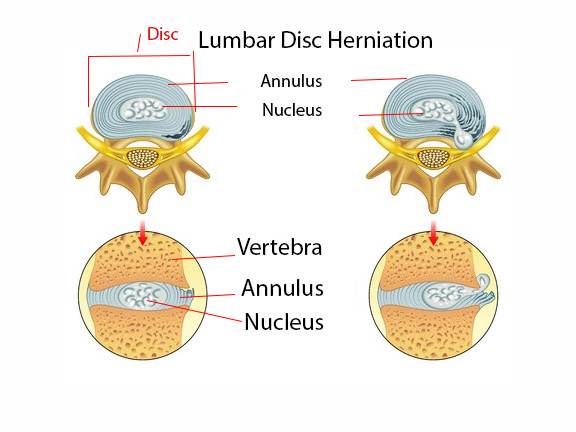
#1 Degenerative Changes in the Spine and Discs
Your doctor might have told you that you have Degenerative disc, osteoarthritis or Degenerative Disc Disease. (DDD) They all mean the same thing essentially. Osteoarthritis makes the disc weaker.
Your disc is made of the nucleus and annulus. Like a doughnut, the nucleus is the jelly and the annulus is the doughy part. The annulus (doughy part) becomes weakened and cracked. With cracks and fissures, the nucleus (jelly) starts to bulge out of the disc and eventually pushes through all of the layers of the annulus.
Contributing Factors to Spinal Stenosis
A bulging or protruded disc will make the spinal canal or vertebral foramen (hole between vertebrae for your spinal nerve) narrower, contributing to spinal stenosis.
Sometimes when the nucleus herniates right through the annulus causing spinal stenosis all on its own. Most of the time, the spinal cord gets squeezed from two or more sides.
See Also: Disc Herniation Part 1: Best Treatment To Help Your Lumbar Disc
See Also: Herniated Disc Part 2 Exercises For Your Herniated Disc
http://www.thebetterwayback.org/the-back-beat-blog/what-is-stenosis/
# 2 Facet Osteoarthritis: DDD>>Facet>>Stenosis
Facets are part of the vertebrae that make up the joints in your spine. [Picture above] Facet Osteoarthriris is the wearing out of your facets seen on the right side of the picture above. Osteoarthritis causes more pressure to be put on your facet joints. With more pressure, the joint wears out faster. To stabilize all this wearing out of the joint the bone starts to grow bigger and sometimes forms spurs.
The spurs start to grow bigger and bigger until they push on the spinal cord or spinal nerve.
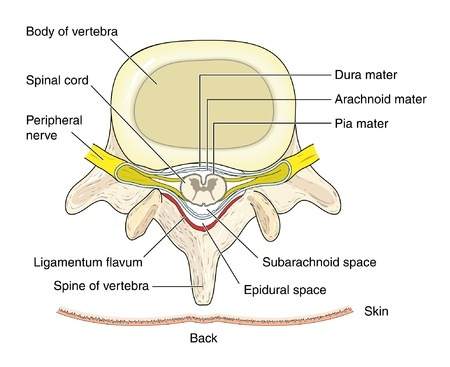
# 3 Ligamentum Flavum>>Stenosis
Your ligamentum flavum is simply a ligament that is found in between vertebrae. (Red in the picture above) Your ligamentum flavum becomes thickened from osteoarthritis. Your ligament thickens narrowing your spinal canal and eventually pinching the spinal cord.
#4 Spondylolisthesis>>Stenosis
Spondylolisthesis is when your vertebrae slips forward. Most of the time your vertebrae is fractured putting pressure on the nerve. The fracture can happen when you have a fall or get in a car accident but quite often it’s also from degeneration we talked about before.
Degeneration will cause enough wear and tear near the back of the vertebrae. Like a rope rubbing over rocks with enough pressure the vertebrae eventually snap. You may or may not have pain at this time.
Quite often you have pain when the vertebrae slips forward. When the vertebrae slips forward enough the tunnel for the spinal cord gets smaller. Again it’s like one side of a cave you are in closes in on you.
What Treatment Helps Spinal Stenosis?
For spinal stenosis, you should always get conservative care first before embarking on surgery except in the most serious cases.
In a 10-year study of patients with spinal stenosis, most patients got relief within 3 months of starting conservative care, although for some it took up to 1 year. After 4 years, excellent or fair results were found in half the patients with conservative therapy (therapy other than surgery), while four-fifths of the patients getting surgery got the same results. After 10 years things didn’t change much.[1]
If you have 1/2 a chance of getting better within 3 -12 months while avoiding surgery it is worth the effort as surgery has complications.
Exercises For Spinal Stenosis
Walking is an excellent activity for spinal stenosis, but pain can limit your distance. It’s typical to experience discomfort after walking about 100 meters (or yards) and needing to sit for relief.
The Key: Changing Your Posture
The goal is to reduce or eliminate the natural arch in your lower back while walking or standing. This creates more space within the spinal canal, easing pressure on the nerves and offering relief during activities.
How to Minimize Your Lower Back Arch
There are two primary ways to achieve this:
- Flexed position: Walk as if you’re consistently leaning forward slightly, similar to how you might use a cane, walker, or shopping cart.
- Reduced arch: While walking, focus on gently flattening your lower back to minimize its natural curve.
Important Note: These techniques are intended for mild to moderate spinal stenosis. In severe cases, they may offer partial relief but aren’t a replacement for other treatments.
7 Exercises For Spinal Stenosis
The first two exercises are designed to help you give relief from walking and are designed to be the basis for the next set of exercises.
#1 Pelvic Tilt While Sitting
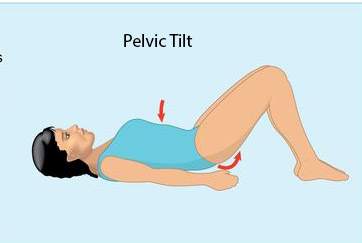
The picture is of a person while lying down but the movement is the same.
- While sitting in a chair put your hand in the arch of your lower back.
- Push into your hand by pulling your tummy in, and pulling your buttock up slightly for a count of 10 seconds at first.
- Gradually increase the count to one minute.
#2 Pelvic Tilt While Standing For Spinal Stenosis
Once you get good at this exercise while walking, you can do this exercise when you feel pain. You should feel an immediate difference. The problem is you probably won’t be able to hold this position for long.
To get longer-lasting relief you need to change your posture. Once you have changed your posture you will be able to go for longer walks.
- Stand up with both feet shoulder-width apart.
- Put your hand behind the arch of your lower back
- Push back against your hand just like you did while sitting holding for a minute or as long as you can.
Change Your Posture For Walking and Standing
A: Arch Your Lower Back Like The Cow Pose in Yoga – Stretch your lower back erector spinae (low back muscles).
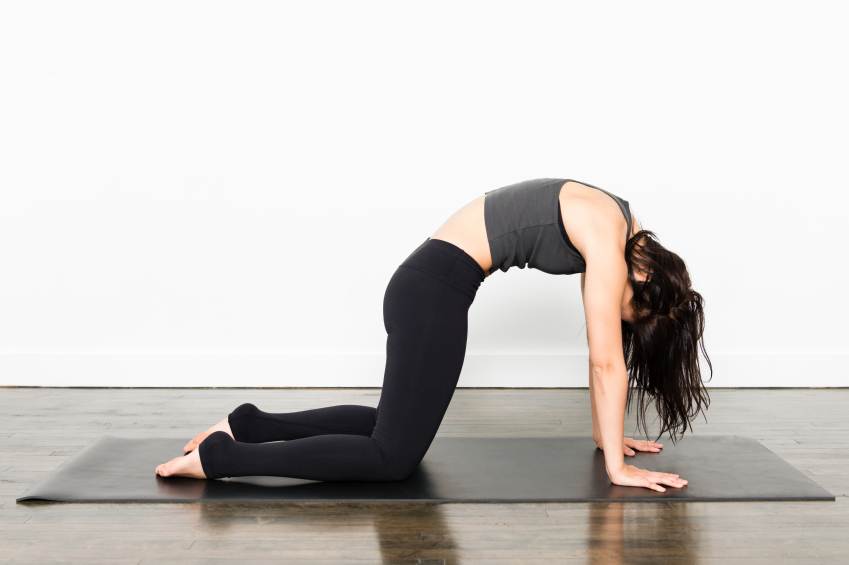
- Get on all fours with your hands under your shoulders, and your knees under your hips.
- Arch your upper back and lower back like a cat does when it’s scared.
- Hold for 30 seconds – do 3 sets.
- If you have a disc problem, or it hurts to arch and flex your back, this exercise is not for you.
A: Child Pose: Second stretch for your lower back erector spinae (lower back muscles).
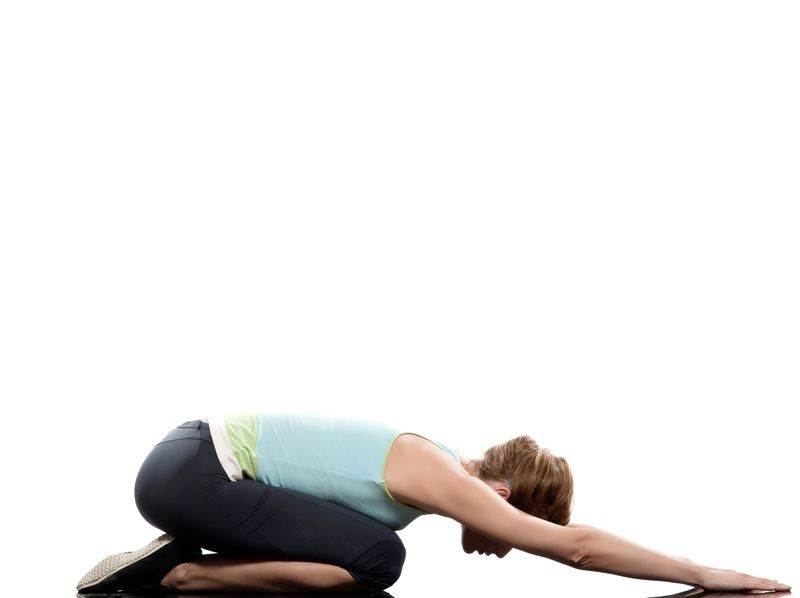
- Get on your hands and knees.
- Sit back onto your heels with your arms reaching out as far as they will go.
- Your head is looking down – neck down.
- Hold for 30 seconds – do 3 sets.
A: Lunge Pose: You need to stretch the hip flexor muscles (psoas muscles)
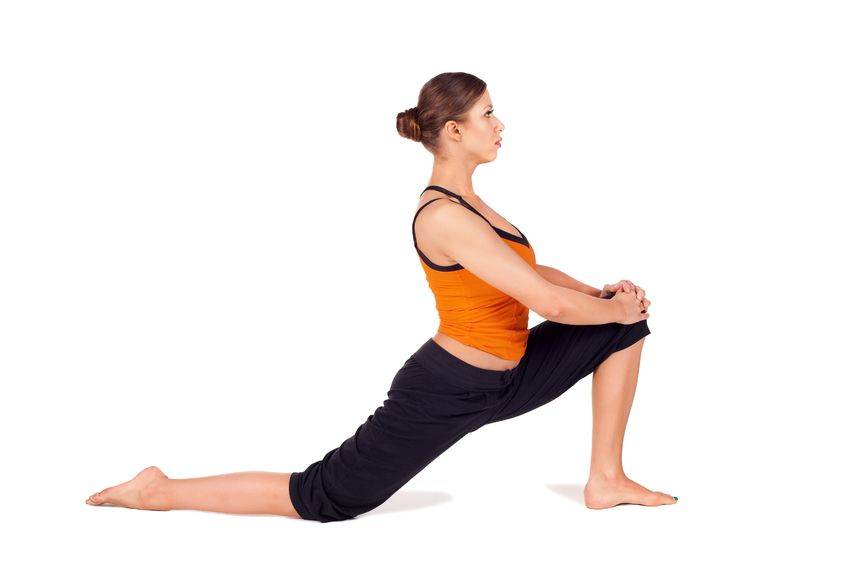
- Get down on your knees.
- Put one leg forward with the knee bent to 90 degrees.
- The other leg is back with the knee very slightly bent resting on the floor.
- You should feel the stretch in the front part of your hip.
- Hold for 30 seconds and do 3 sets.
Second, strengthen your gluteus maximus (your butt-shaping muscle) and abs (your rectus abdominus muscles or six-pack muscles)
I will give you two exercises to strengthen your gluteus maximus. The squat and the single-leg squat.
B: The Chair Squat To Strengthen Your Gluteus Maximus
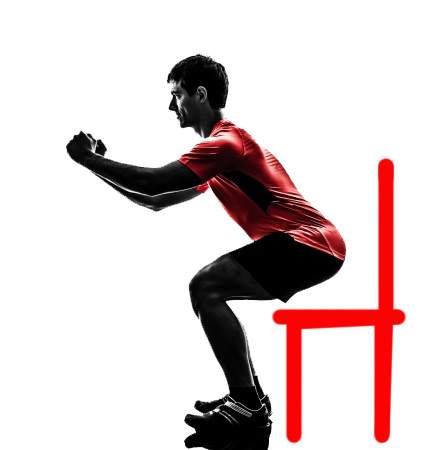
- Stand with your back to the chair.
- Your feet should be shoulder width apart with your knees turned out slightly more than your feet turn out.
- Stick out your butt as far as you can but keep your lower back arched.
- Touch the chair and come right back up 10X – do 3 sets.
B: Single Leg Squat To Improve Your Posture. When you can do three sets of chair squats easily, try single-leg squats.
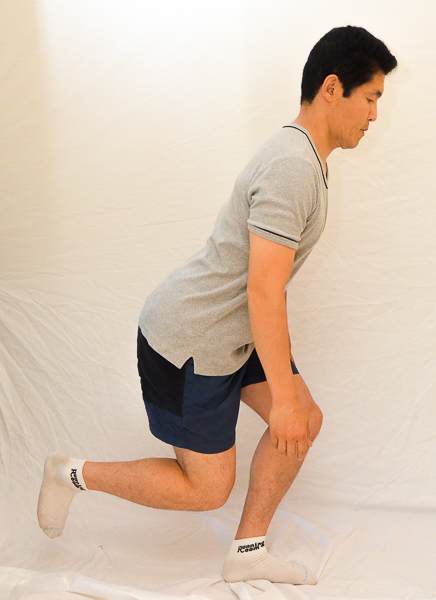
- Always stand near a wall so, you can support yourself if you lose your balance.
- Stand on one leg.
- Stick out your butt as much as you can while bringing your other leg back, dragging it on the floor to keep balance.
- Go as far as you can with the back leg.
- Don’t let your knee go forward past the big toe
- Do 3 sets of 10.
Strengthen Your Abs To Help Your Posture
B: Front Planks strengthen your abs without putting dangerous pressure on your discs like crunches and sit-ups do.
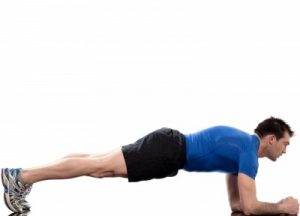
- Lie face down.
- Toes together and your arms shoulder width apart.
- Hold this position without raising your butt too high
- Your body should form a straight line. Look in the mirror.
- Hold for up to 1 minute at a time. – do 3 times.
B: Advanced Abs Strengthening To Help Your Posture

- Get a basketball or medicine ball.
- Get in the front plank position.
- Balance with your forearms on your medicine ball/basketball.
- Pull your arms in toward you while balancing on the ball.
Aerobic Exercises For Spinal Stenosis
#1 Walking For Spinal Stenosis
Walking is good, for spinal stenosis. Once your posture is changed enough the distance that you can walk will increase. If you can walk without pain with your new posture you are ready for the next step.
Speed Walking increases the muscle strength and energy your body has to use and also increases your cardiovascular (heart) health to boot.[2]
#2 Swimming For Spinal Stenosis
Swimming takes the pressure off your joints and your lower back. Watch out for the common breaststroke. This puts your spine in extension and could aggravate some people despite the buoyancy provided by the water.
For those aggravated by breaststroke, you should try side stroke or front crawl, which puts your lower back in flexion. The butterfly stroke is too vigorous and puts your spine in repeated extension much like breaststroke.
#3 Biking For Spinal Stenosis
Biking especially in the arrow position (race position which you bend from the hips) is especially good for those of you with spinal stenosis. The further you bend forward the larger the space created in your spine.
Just don’t do it for too long or you will likely create a neck problem. After 1/2 an hour, I would take a break from the arrow position.
If you are going outside beware of bumps and potholes as a sudden jolt can aggravate your back and leg pain. Otherwise, indoor stationary biking is the best for you.
Tell us what you think in the comments below and like us on Facebook. This Downtown Toronto Sports Chiropractor will answer all your questions
References
1. Amundsen T1, Weber H, Nordal HJ, Magnaes B, Abdelnoor M, Lilleâs F, Lumbar spinal stenosis: conservative or surgical management?: A prospective 10-year study Spine (Phila Pa 1976). 2000 Jun 1;25(11):1424-35; discussion 1435-6.
2. Anne B. Newman, MD, MPH et al, Association of Long-Distance Corridor Walk Performance With Mortality, Cardiovascular Disease, Mobility Limitation, and Disability, JAMA. 2006;295(17):2018-2026. doi:10.1001/jama.295.17.2018.
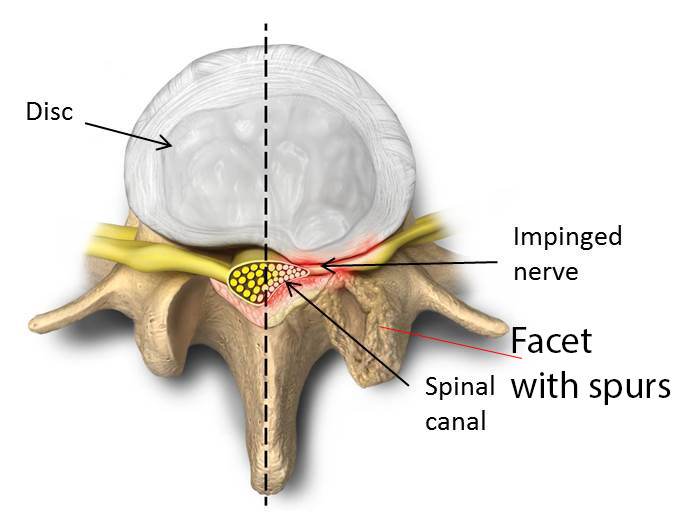




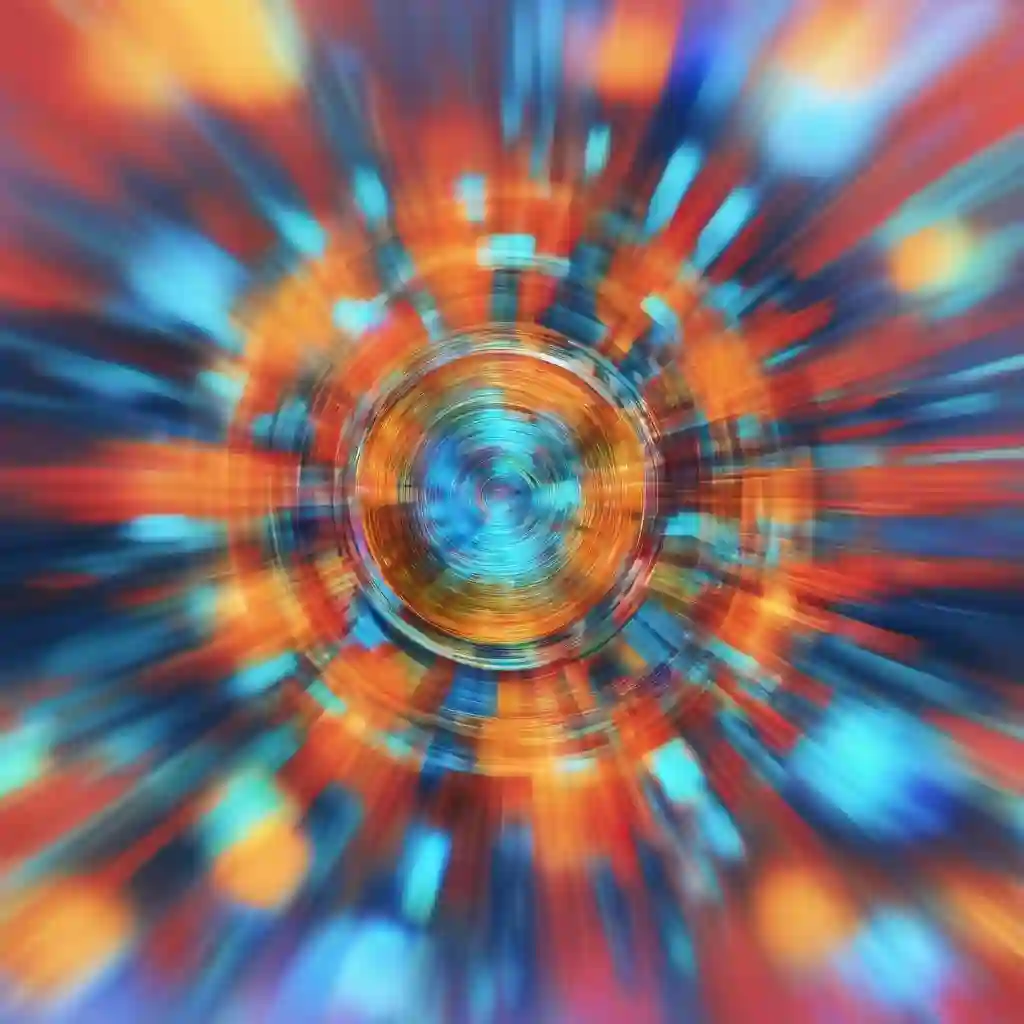

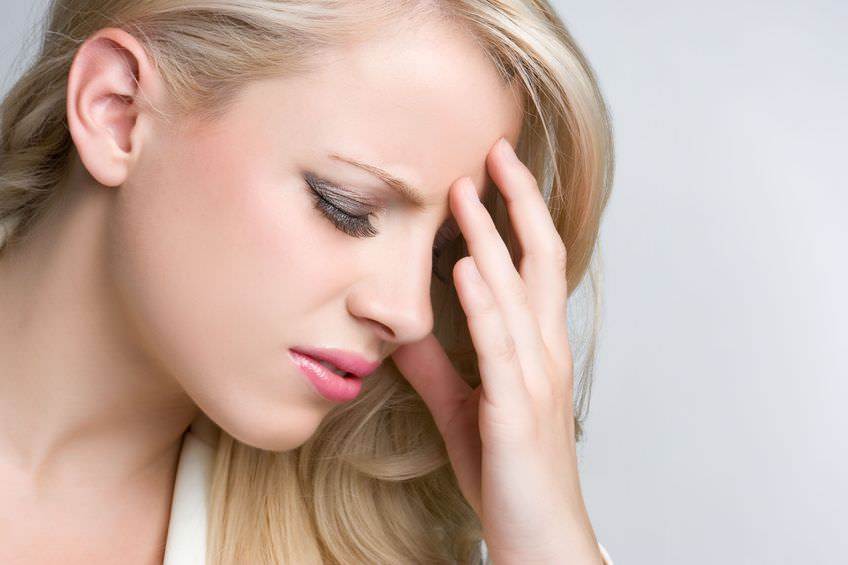

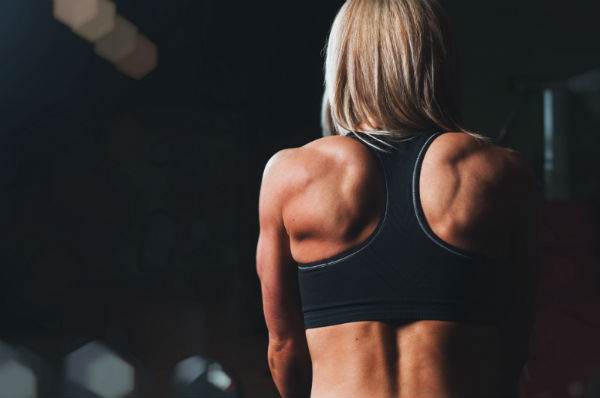
I have severe spinal stenosis: exercises shown would do me more harm than good. I fear for the person who performs these that pain would be likely and a lot of people will push through the pain not a good theory now especially with spinal stenosis
Author
Thanks for your comment. I would say that I have treated many people with spinal stenosis and haven’t found these exercises to be painful or harmful. That’s my opinion.